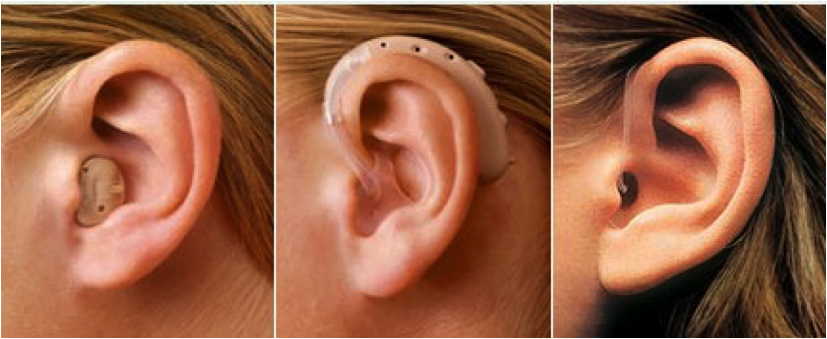Stuttering & Language
One of the most unique aspects of human brain function is our ability to use language to communicate with others. Communication refers to any verbal or nonverbal behavior that influences the attitudes, ideas, and behaviors of another person. Conversational speech is one of the most important ways that people communicate. People can also communicate by gesturing or by using a specific facial expression.
Speech refers to the production of sounds that allow individuals to express thoughts, and includes articulation, fluency, and voice. Language refers to the use of a system of symbols, such as spoken and written words that allow people to communicate in a rule-governed manner.
Both children and adults can have speech and language problems. It is estimated that one in 10 Americans, across all ages and races, has experienced or lives with some type of communication disorder. Nearly six million children under the age of 18 have a speech or language disorder.
Difficulties pronouncing sounds, or articulation disorders, and stuttering are examples of speech disorders. Language disorders can be receptive, expressive, or both. People with an expressive language problem may have difficulty naming or reading. People with a receptive language disorder have difficulty understanding what others say.
Communication disorders can be developmental or acquired. Developmental speech and language problems are usually recognized between the ages of 3 and 5. Young children with communication disorders may not speak at all, or may have a limited vocabulary for their age. Some children with communication disorders have difficulty understanding simple directions or are unable to name objects. Developmental speech and language problems are more common in boys than girls, and can run in families.
Communication disorders that occur as the result of a stroke, traumatic brain injury or brain tumor are called ‘acquired’ communication problems. Speech and language problems are common in adults with neurodegenerative brain disorders like Parkinson’s disease and Alzheimer’s disease.
Stuttering is a motor speech disorder or dysfluency characterized by intermittent/involuntary repetitions, prolongations, or blocks of speech sounds, syllables, and words. Most people who stutter know what they want to say, but have trouble producing a normal flow of speech. Stuttering can make it difficult to have a conversation, to read out loud, or talk on the phone. Symptoms of stuttering can vary significantly throughout the day. Speaking before a group can make stuttering more severe; singing, reading, or speaking in unison may temporarily reduce stuttering rate.
The cause and biological basis of stuttering are not completely understood. In the past 30 years research studies have found that brain networks are disrupted in people who stutter, although brain injury to a specific region is not diagnostic. Stuttering can be developmental or neurogenic. Neurogenic stuttering is more common in adults and can occur in a variety of neurological conditions including: stroke, traumatic brain injury, and dementia. In contrast, developmental stuttering usually begins in early childhood and is not associated with a specific neurological condition.
Developmental stuttering occurs in five percent of children and persists in about 1 percent of the adult population. It is estimated that 3 million Americans stutter. Stuttering usually begins between the ages of 3 to 5 years. This timeline coincides with a developmental period known as vocabulary spurt. This is a time when children start to form sentences and are adding new words to their vocabulary at an accelerated rate of ten to twenty words a week. Boys are affected more than girls. Independent of treatment, most children become fluent within a year after onset. More girls recover that boys; about 4 or 5 times more men than woman continue to stutter as adults. Developmental stuttering can impact academic, emotional, social and vocational achievements of individuals who stutter. Important questions remain regarding factors that cause, exacerbate and/or maintain stuttering. Likewise, the efficacy of various treatments for stuttering remains a source of vigorous debate and investigation.
Aphasia is a language disorder that happens when you have brain damage. Most people with aphasia have brain injury to the left half of the brain, also called the left cerebral hemisphere. This is because the neural representations of language are located in left-sided brain networks in most people.
Aphasia may make it hard for you to understand, speak, read, or write. It does not make you less smart or cause problems with the way you think. Brain damage can also cause other problems along with aphasia. You may have muscle weakness in your mouth, called dysarthria. You may have trouble getting the muscles of your mouth to move the right way to say words, called speech apraxia. Difficulty pantomiming, manipulating, or using tools or making gestures is called limb apraxia. You can also have swallowing problems, called dysphagia.
Speech-language pathologists provide treatment to people with speech and language problems. Many adults are treated for speech and language problems following a stroke or other brain injury. Children with communication disorders are first referred for speech and language evaluations when their delays in communicating are recognized. A comprehensive evaluation involves a neurological evaluation with psychometric testing. Cognitive tests are designed to assess learning and memory; motor control and language; attention, logical reasoning abilities, reactions to different situations, and thinking performance. Treatment can be effective in improving communication skills in people with both developmental and acquired speech and language disorders. Innovative research is ongoing and is a major focus of the Brain Institute of Louisiana.
(Source: American Speech-Language-Hearing Association, National Institute on Deafness and Other Communication Disorders – NIDCD)Helpful Videos
Stuttering and the Brain
What causes stuttering?
What is aphasia?
Janna B. Oetting: Identifying Disorder Within Linguistic Diversity


